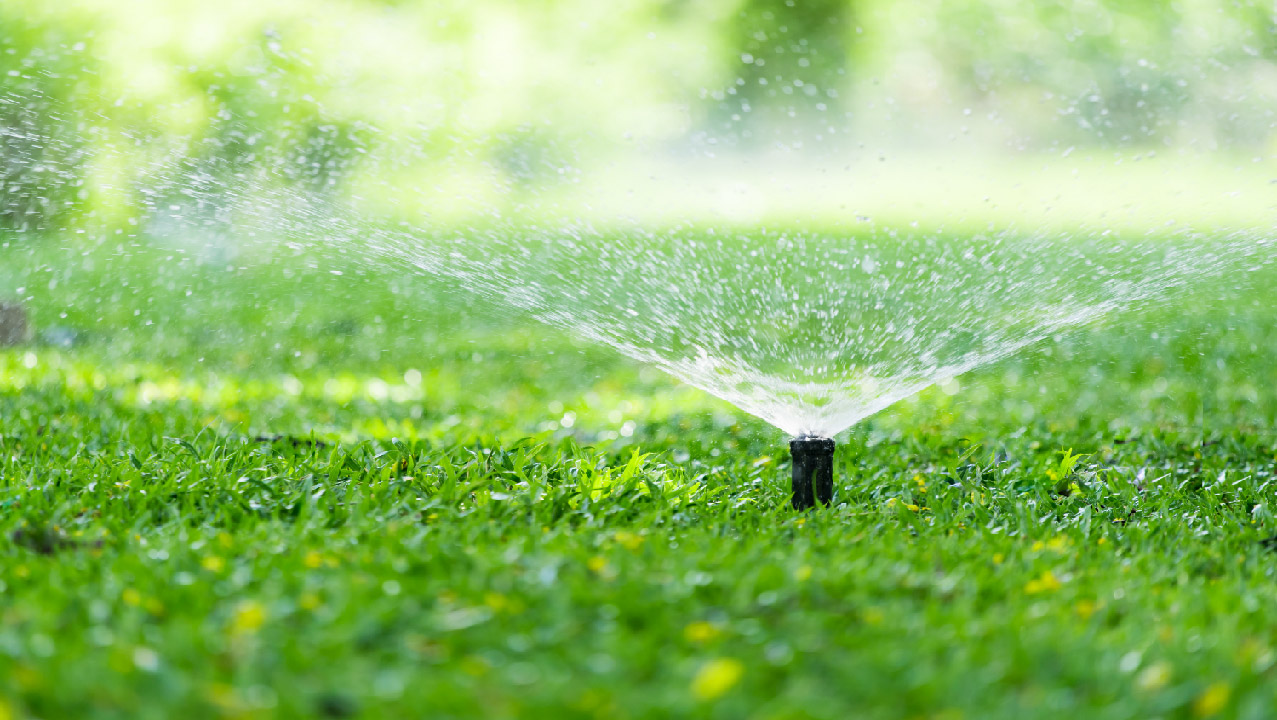Tips for Choosing the Correct Sprinkler Head
May 4th 2023
Wondering how to pick the best sprinkler head for you? You're in the right place! Sprinkler heads have different strengths and weaknesses, depending on what you need to use them for. Choosing the right one at the beginning can save you a lot of time and trouble down line. First, it may be helpful to undergo a brief landscape irrigation audit to determine what your needs are. It is also important to know that all sprinkler heads may benefit from attaching an irrigation filter in order to limit sediment and debris from building up in your sprinkler system. Read on for some solid tips on how to choose the correct sprinkler head for your landscape.
Fixed Spray Sprinkler Heads
There are two main kinds of sprinkler heads: fixed and rotary. Fixed spray sprinkler heads are designed to produce a consistent stream of water in a fixed position. The nozzle that you install will determine the pattern and radius of the water spray. Flood sprinkler heads are another form of a fixed sprinkler that ‘floods' the small area surrounding it. Multiple-stream sprinkler heads produce many different thin streams of water at a slower rate than traditional fixed heads. Pop-up sprinkler heads are a type of fixed sprinkler head that has moving parts in order to emerge from the ground and spray water from a low angle. If you are planning on placing a sprinkler head in the middle of your lawn, pop-up heads are advised. Fixed heads are best for small, even surfaces.
Fixed heads tend to have a lower pressure per square inch (PSI), and so they rarely spray more than 15 feet. Because of this, fixed sprinklers should be placed within 15 feet of each other to ensure there are no dry spots in your landscape. It is recommended for the spray from each head to overlap a bit. Differing spray patterns are available, and the one you choose will likely depend on how large the area you want to water is. Fixed heads can spray in a range from 90 degrees all the way up to 360 degrees around.
Rotary Sprinkler Heads
Rotary sprinkler heads are a bit more complex because they have more moving parts in order to rotate the head. Impact rotary sprinklers move back and forth firing bursts of water at a high pressure. Gear driven rotary heads distribute water evenly at a uniform speed and often allow for adjustable patterns. Matched precipitation sprinkler heads are another variety that offer lower water waste and adjustability. These heads are better for irrigating larger areas and are ideal for sloping ground.
Because of their higher PSI, rotary heads can spray much further than the fixed heads. It is important to keep this in mind while placing your sprinkler heads in the landscape. Double check how far your rotary head is noted to spray on your packaging, and ensure you build in some overlap in your final layout. With a higher pressure spray, rotary heads are also less susceptible to wind drift, which may be an important consideration if you live in an especially windy area.
Types of Sprinkler Heads And Their Uses
Basic Fixed Sprinkler Head- Typically used for small lawns, shrubs and ground cover.
Flood Sprinkler Head- Designed to soak the soil to reach the root zone. Best for trees, planters and shrubs. Not recommended in areas with poor drainage.
Multiple-stream Sprinkler Head- Run at a slower rate and are good for medium lawns, ground cover, slopes and uneven ground.
Pop-up Sprinkler Head- Provide even water distribution at low angles for all lawn types. May be more expensive to install.
Rotary Sprinkler Head- Best for large or extra large lawn areas, these heads cover a large radius very quickly.
Gear Driven Rotary Head- Best for large to medium lawns and side yard areas.
Matched Precipitation Sprinkler Head- Best for reducing runoff and conserving water. Ideal for oddly-shaped areas.
Some home gardeners may prefer to use water-saving drip irrigation systems instead of relying on sprinklers. To learn more about transitioning, visit Sprinkler to Drip Conversions.

